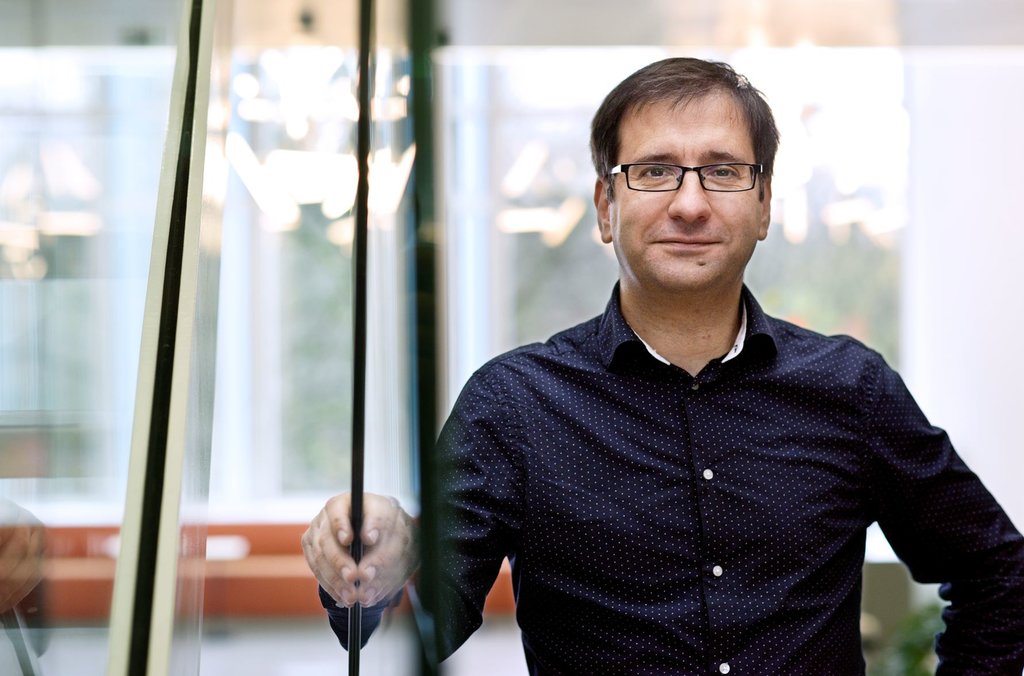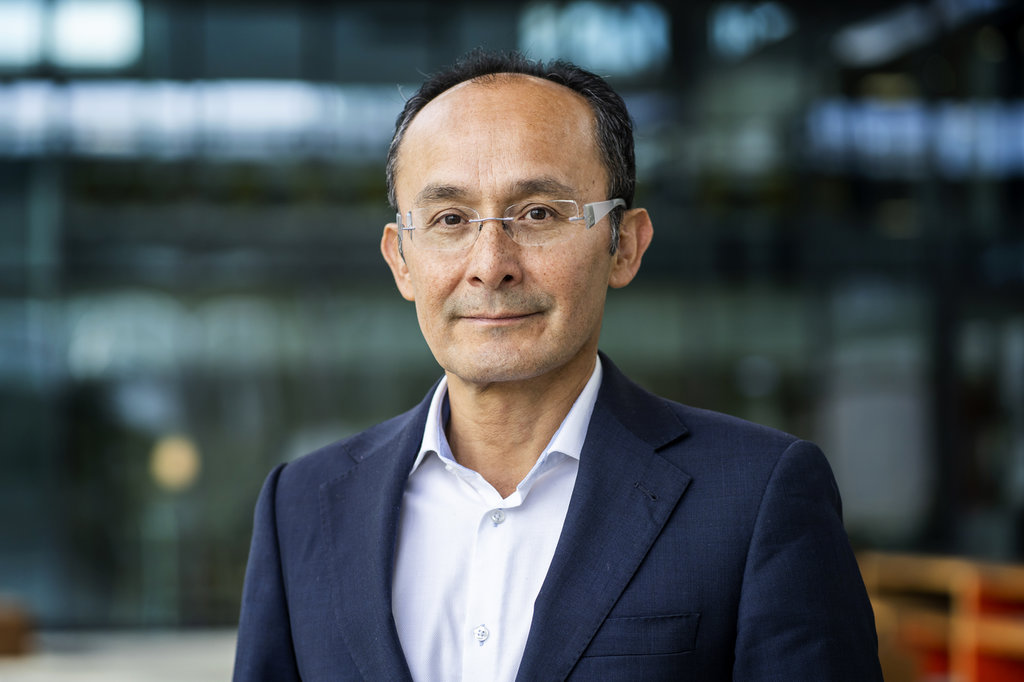5
Towards terahertz for all
By incorporating the Center for Terahertz Science and Technology Eindhoven, the Eindhoven Hendrik Casimir Institute has gained indispensable expertise toward a wide range of future applications. Co-founders Jaime Gómez Rivas and Idelfonso Tafur Monroy explain why terahertz waves are important, and what the center is about.
The Center for Terahertz Science and Technology Eindhoven (CTST/e) was officially launched in July 2021, but had been in the making for long. Jaime Gómez Rivas explains ‘For TU/e, activities in the terahertz field really kicked off when Marion Matters came to Eindhoven in 2011. Marion and I had been collaborating before on a project
The Center for Terahertz Science and Technology Eindhoven (CTST/e) was officially launched in July 2021, but had been in the making for long. Jaime Gómez Rivas explains ‘For TU/e, activities in the terahertz field really kicked off when Marion Matters came to Eindhoven in 2011. Marion and I had been collaborating before on a project to develop on-chip terahertz transceivers when we were both at Philips. So when I also joined TU/e some years later, it was only natural for us to pick up where we left off.’ Following these events, Idelfonso Tafur Monroy came to Eindhoven from DTU, Dook van Mechelen joined TU/e from ABB, and recently Shihab Al-Daffaie joined the team from TU Darmstadt. Their combined expertise makes TU/e the strongest institution in the Netherlands in terahertz science and technology.
‘What’s really unique and of great added value, is that in Eindhoven we have a broad scope when it comes to this field,’ Idelfonso Tafur Monroy says. ‘We combine knowledge on electronics, photonics, telecommunications, and quantum technology, which opens up possibilities for applications in near field imaging, smart surfaces, plasmonics and what more. To create fruitful synergies between these different fields, community building is essential. That is why, besides sharing expertise and starting new collaborations within the CTST/e, we also organize national terahertz workshops and a European summer school on this topic.’

Jaime Gómez Rivas |
full Professor
Exploring unknown territory
Traditionally, terahertz waves make up a relatively unexplored territory. That is unjustified, thinks Gómez Rivas. ‘The frequencies we are talking about lie in between the infrared and microwaves. These are very interesting frequencies, since they correspond with vibrations in molecules and transitions in nanomaterials and semiconductors.’ Terahertz radiation is non-invasive and non-destructive, which makes it ideal for a myriad of applications, both professors state. Tafur Monroy: ‘It is perfectly suited for all kinds of non-destructive imaging applications, ranging from detecting skin cancer and studying cell surfaces in vitro to checking thin layers of paint or monitoring the quality of semiconductor layers during growth.’ ‘That is precisely why in Eindhoven, we work on a vast range of topics,’ Gómez Rivas adds. ‘For example, in my group, we develop resonant structures, such as metallic nanoparticles and structured surfaces, to enhance light-matter interaction. We use this interaction to probe plasmas, the electrical properties of thin films, and even to very precisely measure the amount of doping in semiconductor materials without destroying or even touching the sample.’
Besides applications in sensing, also the use of terahertz radiation for communications is one of the focus points in Eindhoven, Tafur Monroy illustrates with an example. ‘We work on wireless technology for 5G and beyond. Our future broadband communication networks need to go to transmission rates of terabits and higher. We look into the possibilities to use terahertz waves for the wireless part, meaning that we are developing technology to translate signals in telecom wavelengths coming in from a fiber into terahertz signals to be transmitted by antennas. And we not only need a next generation of fast transceivers, photodiodes, and switches, but we also need to come up with smart ways to design the interface between the terahertz generating chips and air.’

Cheap portable systems
One of the main challenges for terahertz technology as a whole is making it more accessible for users. And that is also where the combined expertise of EHCI-members will come in handy. ‘At the moment, terahertz still requires strong lasers, huge optical tables and the like. That makes the technology too expensive and too bulky to expand toward other
applications. We want to combine different technologies to enhance the generated power, increase the detection sensitivity and make the entire system portable, preferably without any mechanical parts or expensive optics. Integrating terahertz technology into photonic integrated circuits is one of the possibilities to achieve these goals.’
Photonics and terahertz are mutually dependent, Tafur Monroy emphasizes. ‘Indeed, we need photonics to generate terahertz radiation and to miniaturize our systems, but scalable integrated photonic manufacturing in its turn needs terahertz applications to routinely monitor the production process of photonic chips. The collaboration between the CTST/e and the EHCI allows us to involve more stakeholders in both developments and to act as a single point of entry, both for researchers within TU/e and companies outside that are interested in the possibilities of terahertz technology for their own businesses.’ For Gómez Rivas, the reason to join forces is also clear: ‘If you really want to make an impact as a university, you need to go beyond group-thinking. Centers and institutes like these make our university more competitive. By sharing facilities, labs, colloquia and people, we gain visibility, leverage our resources and define novel directions.’ Tafur Monroy is already a step ahead: ‘The CTST/e gives terahertz research a face. I hope these first levels of organization can act as stepping stones toward a national terahertz society.’
IDELFONSO TAFUR MONROY |
full Professor